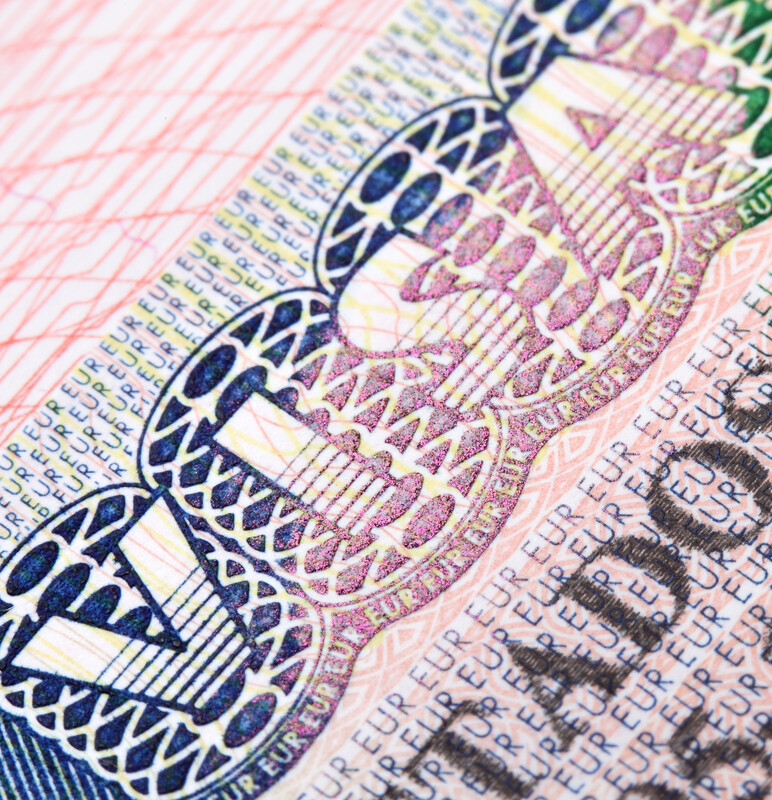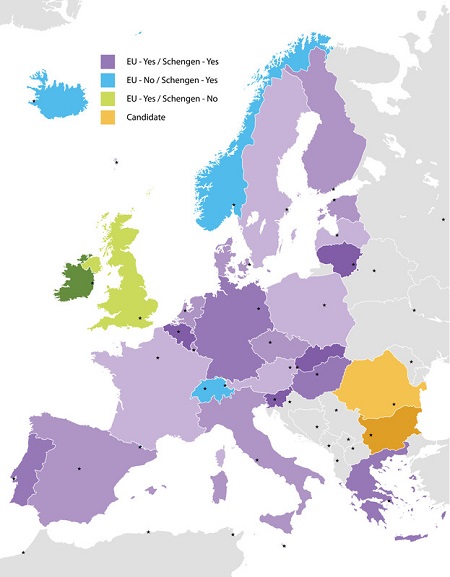Why should I choose an ETIAS visa waiver over a Schengen visa?

- Posted on 25 Sep, 2020
- 0 56
Prepare to visit Europe with the European Travel Information System
September 2020 – If you are a planning a trip to Europe in the coming years, you may have heard that requirements are changing for travel in the Schengen area. Expected to go into effect in 2023, travelers from 61 countries, including the United States, will be required to travel with either a visa or a visa waiver approval through a program known as the European Travel Information System (ETIAS). This is a change from the days of traveling with just a valid passport. So, which one do you need?
What is ETIAS?
In an effort to further secure the external borders of the Schengen area of Europe, the ETIAS system will pre-screen and authorize travelers for entry as a waiver for a visa. This area comprises 26 ETIAS countries, most of which are European Union (EU) members. The European Travel Information and Authorization System (ETIAS) will identify any potential security risks while also letting member countries know who is entering and exiting the region.
Once approved, travelers will be able to move freely within the Schengen Area for short-term travel of up to 90 days in any 180-day period. An online ETIAS Eligibility Checker will allow nationals of dozens of countries learn if they may be eligible for the highly anticipated Visa Waiver Program (VWP) which will allow for visa-free travel with a 90-day limit in any 180 day period for the three years of the ETIAS validity.
According to the European Commission website, “The Schengen provisions abolish checks at the Union’s internal borders, while tightening controls at the external borders…” This means much easier travel among member countries while ensuring better safety for travelers and citizens of the region.
What is a Schengen visa?
A Schengen visa is the process and paperwork required to enter a country, or in this case 26 countries, in the Schengen Area.
“26 countries in total form the Schengen Area by entering into a mutual agreement to allow the free movement of all Schengen nationals, remove internal borders and strengthen the external ones. 22 of those countries are European Union members, while the other 4 are part of the EFTA (European Free Trade Association).” -Etia.com
The Schengen visa has unique requirements for work, school, and tourism. You can learn more about the Schengen Visa here.
Do I need ETIAS or a Schengen Visa?

ETIAS is not expected to go into effect until early 2023 (originally planned for 2021), so until then, many travelers can go to the Schengen Area with a valid passport. Once the ETIAS system goes into effect, a Schengen visa or the ETIAS visa waiver is required for all travel. Travel requirements will vary based on when and where you are traveling, your purpose, and length of stay.
Authorized travel purposes
A visa is not required if you are visiting this part of Europe for short-term tourism (the average leisure traveler). You can also avoid having to apply for a visa when you are traveling for medical purposes, a conference or class, or business. However, if you are coming to the region for long-term work or studying abroad, you will still need to apply for a Schengen visa.
Length of stay
Regardless of your purpose for travel, if you plan on staying longer than 90 days in any 180-day period, you will be required to apply for a visa. The Schengen visa application process is lengthy, more expensive than a visa waiver, and requires an in-person interview.
Essentially, most travelers can (and should) apply for the ETIAS visa waiver for easy, visa-free travel without the hassle of applying for a visa.
Benefits of the visa waiver
Once you have been approved for visa-free travel, you can visit any (or all) of the 26 countries in the Schengen area for up to 90 days in any 180-day period. For example, you can arrive in Spain, fly over to Iceland, and take a quick trip to Germany, all without additional paperwork.
Plus, the visa waiver is valid for three years or when your passport expires, whichever comes first, so you don’t have to apply each time you want to travel to the region. Note: if your passport expires within the three-year waiver period, you will need to re-apply for ETIAS.
Where can I travel visa-free?
With ETIAS, you can travel anywhere in the Schengen region, which includes 26 EU countries as well as the micro-states of Monaco, San Marino, and Vatican and non-European Union members Iceland, Norway, Lichtenstein, and Switzerland. The waiver allows you to enter the area and freely travel between countries. Other European nations will have different entry requirements.
Please note that not all European Union members are currently part of the Schengen agreement. For example, Ireland currently has its own travel requirements. Bulgaria, Croatia, Romania, and Cyprus are expected to join the agreement at some point in the future.
How do I apply for ETIAS?
The application process is simple and inexpensive. The application will be entirely online and will require details about your identity and initial travel plans, including:
- Biographic information
- Contact information
- Passport information (must be valid)
- First Schengen area country of arrival (you may exit from any country)
- Educational/occupational information
A valid passport will be required at the time of the application and must be valid for three months after your planned return; there is also a small fee. While the process is simple, it is vital that all information is entered correctly.
Each traveler’s information is processed through several databases as a security screening, and the application takes about 20 minutes to complete. In most cases, applicants will be approved in minutes. In unusual instances, the process can potentially take up to a few days.
Applying for a visa, on the other hand, is time consuming and costly. The process is lengthy and requires an in-person appointment at an embassy or consulate. It is also not necessary in most cases. ETIAS can be completed from a mobile device or desktop computer.
Is ETIAS required?
It depends on when you are traveling. Once ETIAS takes effect, travelers will be required to apply for either the ETIAS waiver or approval by the Visa Waiver Program (VWP). You will not be allowed entry to the Schengen area without one or the other.
However, if you are planning short-term travel to the area before 2023, you can still travel with just a valid passport.
Visa-free travel to the Schengen area
The Schengen area is changing the way we travel around Europe. The ETIAS waiver is required for visa-free travel to all 26 countries in the Schengen Zone beginning in 2023. Learn about ETIAS requirements and review our complete guide to ETIAS.
